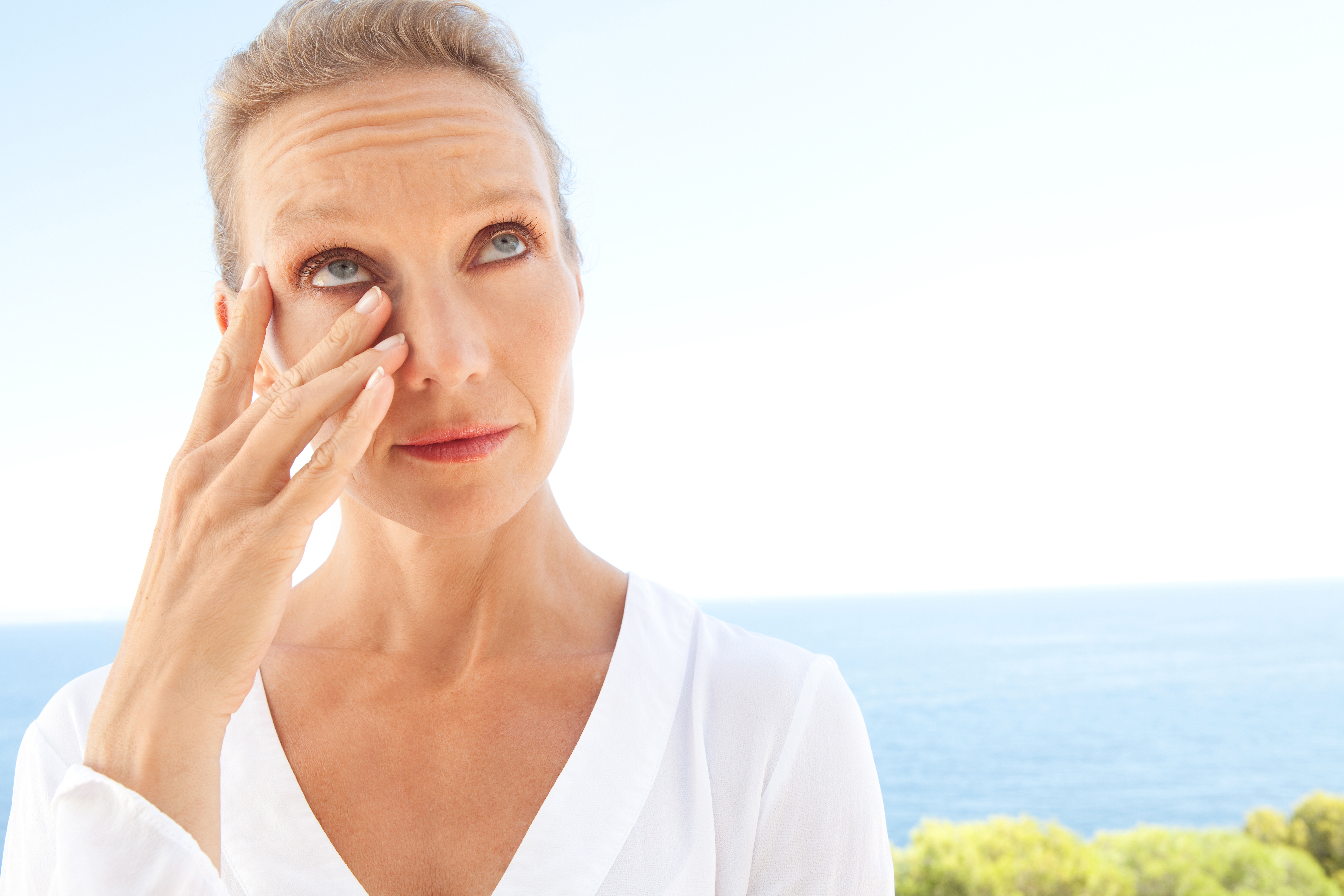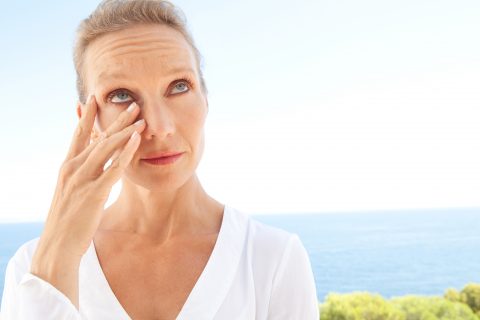What is dry eye?


 by Eleanor Swystun, optometrist at Valli Opticians Lockwood and Almondbury
by Eleanor Swystun, optometrist at Valli Opticians Lockwood and Almondbury
Dry eye is a common condition that affects one in four people in the UK. It is not usually serious, but it can be uncomfortable. Severe cases of dry eye are rare, but they do carry a risk of causing long term damage.
Although statistics say 1 in 4 people suffer from dry eye, I expect this number to be higher in reality as many people have dry eye, they just don’t experience any symptoms as it is so mild. I see 14 patients a day and on average six of those patients have a degree of dry eye.
Dry eye occurs when you don’t make enough normal (lubricating) tears or the ones that you do make are of poor quality. This means the tear film is unstable and leads to various symptoms ranging from watering eyes to blurred vision.
The tear film is the front layer of your eye, which is a smooth optical surface. It is exposed to the environment and is in contact with your cornea (a clear layer which covers your iris) and conjunctiva (a clear layer which covers the white part of your eye).
What are the symptoms of dry eye?
Common symptoms include eyes that are:
- sore
- gritty
- itchy
- red
- tired
- watery
- crusty on wakening
- sensitive to light
- uncomfortable and sometimes painful
You may also experience intermittent, blurred vision.
What are the different types of dry eye?
There are two types of dry eye, which cause different symptoms. The type depends on which layer of the tear film is affected.
Evaporative dry eye is the most prevalent form of the condition. It is believed that the majority of people who suffer from evaporative dry eye have a meibomian gland dysfunction (MGD). The meibomian glands are small, lipid-producing glands which line the lower and upper eyelids. They can often become blocked which means meibum (lipid) is not secreted properly forcing the underlying layers such as the aqueous layer to evaporate. This can happen at any age and can be related to poor diet.
Symptoms include:
- intermittent blurring
- crustiness
- itchy eyes
- watery eyes
- sensitivity to light
Aqueous deficient dry eye is when the lacrimal gland doesn’t produce enough of the middle layer of the tear film, the aqueous layer. This type of dry eye is usually found in older people because, as we get older, glands all over the body don’t work as well as they used to.
Symptoms associated with aqueous deficient dry eye include:
- stinging eyes
- itchy or gritty eyes
- foreign body sensation (a feeling of having something in your eye)
- tired eyes
- intermittent blurring vision
As you can see, some of the symptoms of the different types of dry eye overlap, so it is important to visit an optometrist who can determine which type of dry eye you have by doing some tests.
What are the other causes of dry eye?
Other than age and poor diet you may also be at a higher risk of getting dry eyes if:
- you wear contact lenses
- you spend a long time looking at computer screens without taking a break
- you smoke or drink alcohol
- you spend a lot of time in heated or air-conditioned environments
- the atmosphere is cold, dry, dusty or windy
- you take certain medications. Any medication with the word “anti” in it can cause dry eye, such as antibiotics, antidepressants, antihistamines and anti-inflammatories
- you have meibomian gland dysfunction (MGD) or blepharitis (inflammation of the eyelid margin caused by an increase in bacteria)
How to treat dry eyes
In most cases dry eye tends to be a long-term (chronic) condition, which means you will need ongoing treatment.
Your optometrist will be able to advise on the most suitable drops and gels to relieve your symptoms. It is very important to use the correct type of drops.
If you have dry eyes you should:
- keep your eyes clean (to prevent blepharitis)
- try hot compressors, either with a sterilised hot flannel or an eyebag, for seven minutes. This will unblock the meibomian glands
- increase omega 3 and omega 7 in your diet
- take regular breaks when working on a computer
- try to remember to blink more. This action will help smooth over the tear film creating a smooth optical surface
- make sure you get plenty of sleep so that your eyes get the rest they need
- use a humidifier to stop the air getting dry
- remove your contact lenses after 12 hours and try to take one day off using them a week
- never stop taking prescribed medication without first getting medical advice, even if you think it is causing your eyes to be dry
You should see your optometrist if you still have dry eyes after trying home treatments for a few weeks or if there is any change in the shape of your eyelids. Most people with dry eye will need to follow a regime including the use of hot compressors, artificial tears and regular lid cleaning.


